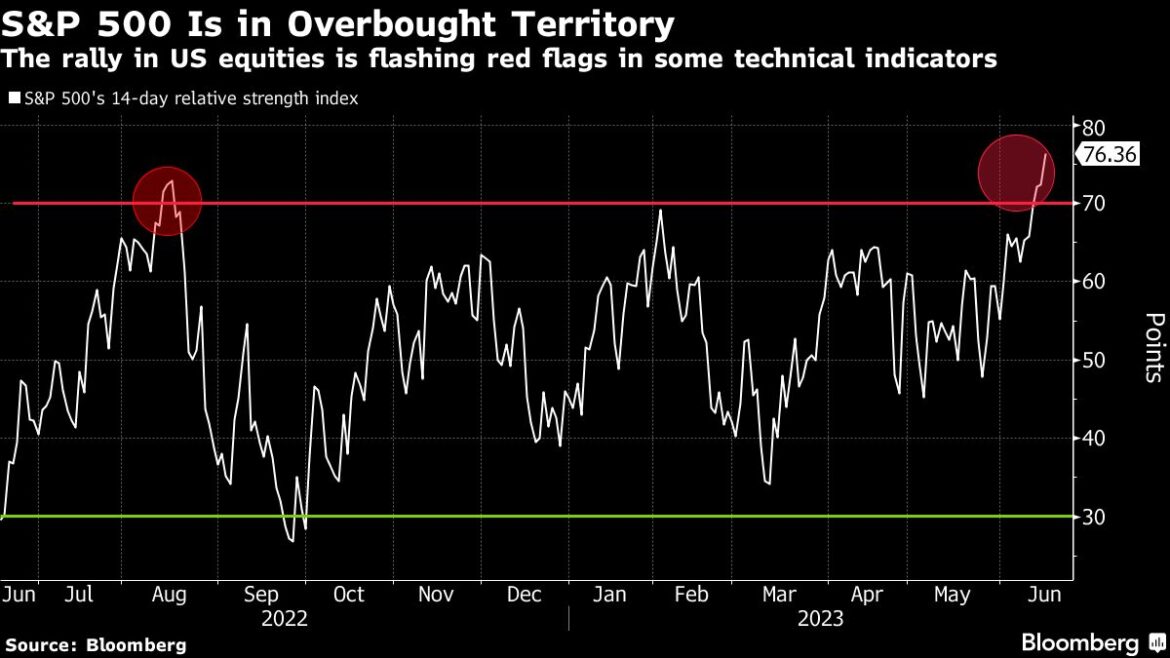(Bloomberg) — The S&P 500 may have entered a technical bull market last week, but Bank of America Corp.’s Michael Hartnett says it’s not the start of a new major rally in equities.
Most Read from Bloomberg
The strategist who correctly predicted the selloff in stocks last year said in a note Friday he’s not convinced this is the start of a “brand, new shiny bull market.” The current market looks more like 2000 or 2008, with a “big rally before big collapse,” Hartnett wrote in the bank’s weekly report on investment flows in various asset classes.
He sees upside of as much as 150 points to the S&P 500 versus 300 points of downside between now and Labor Day on Sept. 4. The index is up 15% this year to 4,425.84.
Hartnett’s call in February that the S&P 500 would drop to 3,800 by March 8 failed to materialize after investors turned to technology companies in a defensive shift. He said bears like him have been wrong in the first half because the US economy avoided a recession and a credit crunch, and called the AI-powered tech rally an “unanticipated event.”
Until the Federal Reserve “reintroduces fear” via a higher target for interest rates and unemployment rate exceeds 4% in a recession signal, stocks can stay higher and credit spreads can remain low, he wrote.
At the same time, Citigroup Inc. strategists led by Beata Manthey said the US market can continue to outperform European peers, even though the rally is led by relatively few stocks. They said that historically, the S&P 500 and growth shares tend to outperform following a narrowing of breadth.
“We find that narrowing leadership alone is not a reason to the sell the market; stocks trade higher on average after markets narrow, though volatility also rises,” said Citi strategists in a note.
Weekly asset flows highlights from BofA’s note citing EPFR Global include:
-
Equities had about $22 billion inflows in the week through June 14, while bonds had $6.7 billion of additions
-
Among equity regions, US stocks led inflows at $23.8 billion, followed by Japan at $2.2 billion of additions, EM stock funds had $1.1 billion inflows, while Europe saw $2.4 billion of outflows
-
Tech led inflows among sectors, while utilities led outflows
–With assistance from Michael Msika.
Most Read from Bloomberg Businessweek
©2023 Bloomberg L.P.
